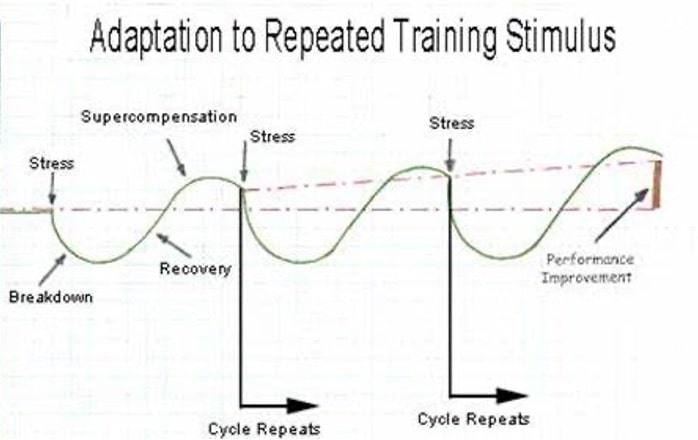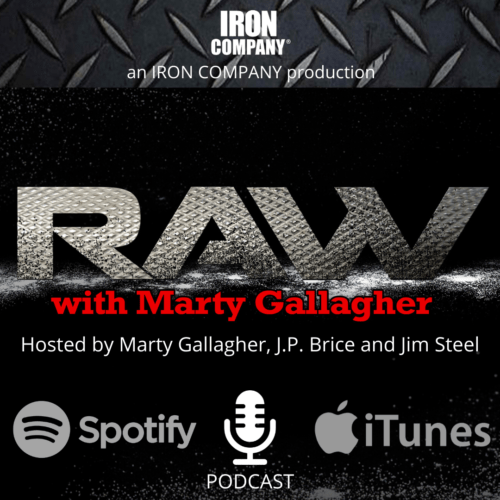
Recovery Accelerators For Weight Training
The curse of too much enthusiasm
When it comes to recovery, what type of recovery accelerators can we do to shorten the time needed to recover from a hardcore weight training session? The quicker the athlete recovers from an effective, body-shattering progressive resistance session, the quicker it can be repeated. Tying into another training session before fully recovering ensures subpar results.
When I have a great training session, I want to repeat it again as soon as possible. I love the way I look, feel and act after a successful training session. Physically I am exhausted. Psychologically I am in a post-workout state of blissful quietude. I revel in the idea that I have just built and strengthened my body.
Psychologically I have undergone a profound change. My post-workout mindset is pure Zen: mentally quiet, centered, though physically exhausted mentally electrified, alert, great clarity replete with amplified senses. A post-workout bliss envelopes me. Exhausted, I am drenched in conscious-altering hormones only released into the bloodstream in response to herculean effort.
My post-workout state of mind is one of exhausted elation and relaxed clarity. I have subjected my body to a body-changing event: I have engaged in a workout so intense that, in response, muscle is built, and strength acquired. In the aftermath of a truly effective weight training session, I routinely attain an advanced meditational state, an exercise-induced Nirvanic bliss-state.
Humans seek to repeat pleasurable experiences and the productive workout followed by the exercise-induced hormonal bliss-state is perhaps the best natural and beneficial high on the face of the planet. Nowhere else will you find so pleasurable an experience that is not only healthy and beneficial but done consistently develops herculean strength and builds mounds of muscle.
Pleasurable experience can be problematic: unless the body is completely rested before the high intensity hardcore workout, results will (necessarily) be subpar. How can an identical workout taken completely rested not produce results superior to the identical workout taken when 70% recovered?
After a great training session, my enthusiasm skyrockets. My childlike enthusiasm causes me to train again too soon before I have fully recovered.
To be effective, hardcore resistance training must traumatize the body. It is the self-inflicted traumatic stresses that trigger the adaptive response and cause the body to favorably reconfigure itself, to strengthen and to grow muscle. The body need be purposefully stressed up to and past its current capacities; repeated limit-equaling or exceeding stress is what triggers hypertrophy, the body’s defensive response to stresses past its capacity to handle.
The body seeks to regain hemostasis, normalcy, before being shock-blasted in a training session. The question looms large: are there things we can do, strategies and modes, tools and techniques, that can accelerate the recovery process? What can we do to regain hemostasis ASAP?
Too much of a good thing done too often creates what muscle scribes used to call “over-training.” Over-training is real. Overtraining occurs when you engage in a new training session before recovering from the previous one.
The “rested effort” is a foundational principle of strength training: to build muscle and get stronger, a 100% effort is required when 100% rested. Please be subtle enough to understand that you can be 100% rested and have an “off” training day. Being 100% rested is no guarantee of a great training session. However, not being 100% rested is a guarantor of a subpar session. No matter how well you did, you could have done better if the session had been attacked fully rested.
Capacity shifts: a 100% training effort does not mean you have to break a personal record in every lift in every training session. Repping any exercise until another rep is not possible defines a 100% effort. A “past capacity” effort might be having a good day and adding a rep or two; or adding a few pounds to an exercise’s training poundage. Forced reps and drop sets are the bodybuilder’s way of taking a muscle past its capacity.
Some days an athlete’s capacity is up, some days capacity is down, regardless, if your capacity at the time of the session is enhanced, normal, or diminished, you can still work up to 100% of that shifting capacity. Even if you are having an off day or down day, hypertrophy can be triggered by working up to (or past) that diminished capacity. You can be fully rested and still have diminished capacity on account of other factors.
The bottom line: it is a waste of time to train all out when not fully recovered. At best you can expect to maintain what you already have built. It is a physiological impossibility to increase absolute strength when training fatigued. Rushing recovery is bound to fail. Is it possible to accelerate recovery from a hardcore training session? Can we shorten the recovery curve?
Recovery Accelerators
- Calories: competitive powerlifters discovered that if they ate vast amounts of food after one training session and preceding the next, recovery was hastened. By providing the body with a surplus of nutrients, the body has the raw material needed to heal, repair and rebuild muscle tissue. Obviously, not all calories are created equal and quality calories trump trash calories; a pound of shrimp or steak is the preferred caloric source to an equal caloric amount of ice cream, donuts, or pizza.
- Quality sleep: there is a difference between restless sleeping and obtaining the deep restorative rapid-eye movement sleep essential to recovery. Deep sleep is when healing takes place and when growth hormone is released. Deep sleep is the natural antidote to over-training. The ability to enter REM is actually improved by hard training. Physical exhaustion is a great deep sleep inducer. Daytime napping is wonderful for those whose lifestyle and circumstance allow it. The daytime power napper seeks to attain deep REM quickly. There is a plethora of sleep-inducing apps available online for insomniacs.
- Hydrotherapy and heat: post-workout steam and sauna sessions have long been thought to be a recovery accelerators. Russian champion athletes swear by steam and sauna. They always follow heat with an ice bath or cold shower. Many athletes will do 2-3 rounds of steam/sauna/ice bath. The intense wet heat of the steam or the dry heat of the sauna opens the pores. An ice bath or cold shower causes pores to snap the pores shut, expelling toxins and waste products produced in the workout. Hot tubs with high pressure water jets are aimed at sore just-worked muscles, another excellent post-workout recovery accelerator.
- Massage: this is the most sophisticated and effective form of post-workout recovery. Manual massage administered by a sports masseuse undeniably accelerates the recovery process. Having a seasoned professional “work on” muscle just attacked in the workout is painful, intense, and effective. Professionally administered massage forcibly dislodges toxins and waste products created during the just-completed workout. The downside is massage is incredibly (deservedly) expensive. Professional athletic teams have masseuses on staff for million dollar soccer, basketball, football and baseball players.
- Slash the training volume: One commonly used strategy used to accelerate the recovery curve is to reexamine the resistance training template and sheer off all extraneous exercises. The strategy is to reduce the training volume, cut training back to the bare bones – what is the least amount that can be done to elicit the desired training result? Often the athlete becomes enamored with minor exercises that are favored yet factually irrelevant. If the goal is to improve performance in the core compound multi-joint exercises, why is it necessary to perform a handful of “assistance” isolation exercises?
Athletic empiricism over the last six decades strongly suggests that the length of time needed to recover from an effective training session can be shortened, to varying degrees, by invoking one or more of the five suggested recovery accelerators. There is no need to worry about shortening the recovery curve if your training sessions are insufficiently intense. How do you know if you are training hard enough to worry about recovery?
Do you get a hormonal “buzz” in the aftermath of training? This is a good indicator that you are training intensely enough to trigger the adaptive response. You either have trained hard enough to trigger the hormonal release or not; a hormonal tsunami is not a subtle or barely discernable thing. Those that train sub-maximally will never experience the hormonal tsunami and are akin to those that do daily “cardio” yet never sweat. The hardcore resistance training session is the foundation: unless the workout is herculean all the talk about recovery is meaningless.
About the Author
As an athlete Marty Gallagher is a national and world champion in Olympic lifting and powerlifting. He was a world champion team coach in 1991 and coached Black's Gym to five national team titles. He's also coached some of the strongest men on the planet including Kirk Karwoski when he completed his world record 1,003 lb. squat. Today he teaches the US Secret Service and Tier 1 Spec Ops on how to maximize their strength in minimal time. As a writer since 1978 he’s written for Powerlifting USA, Milo, Flex Magazine, Muscle & Fitness, Prime Fitness, Washington Post, Dragon Door and now IRON COMPANY. He’s also the author of multiple books including Purposeful Primitive, Strong Medicine, Ed Coan’s book “Coan, The Man, the Myth, the Method" and numerous others. Read the Marty Gallagher biography here.



